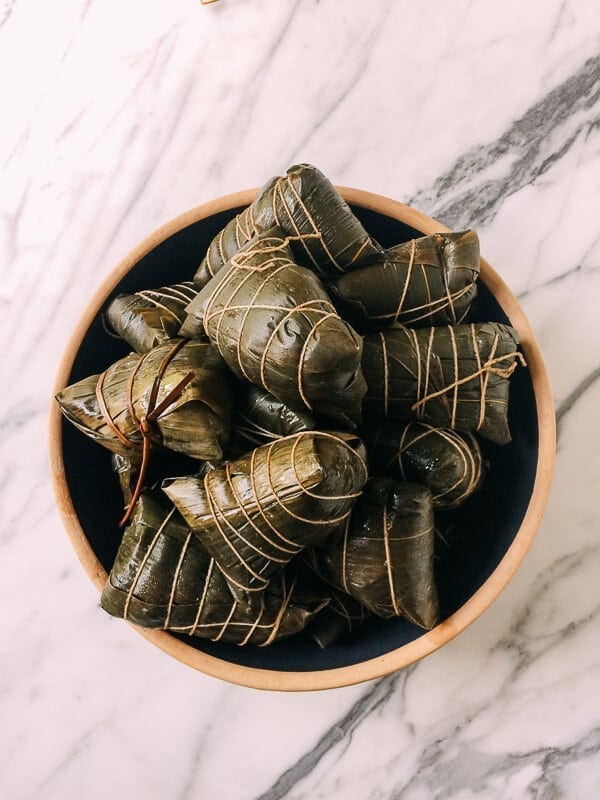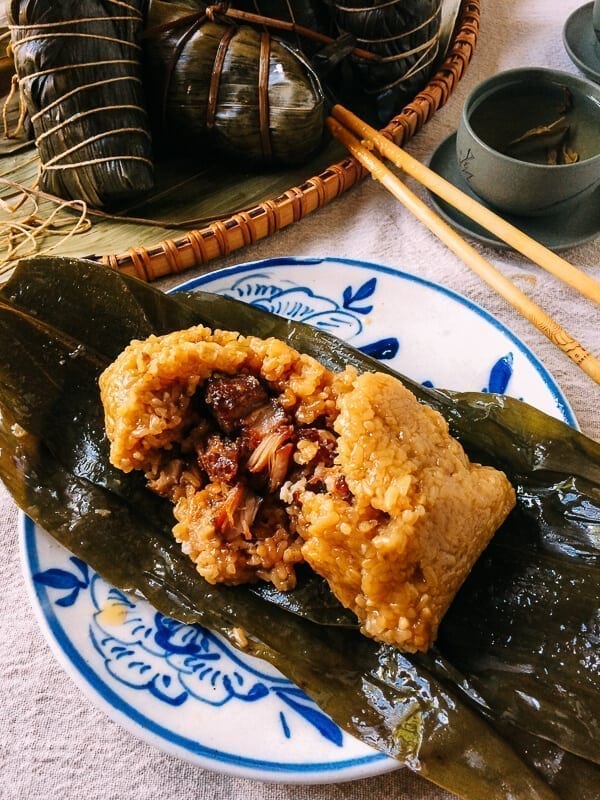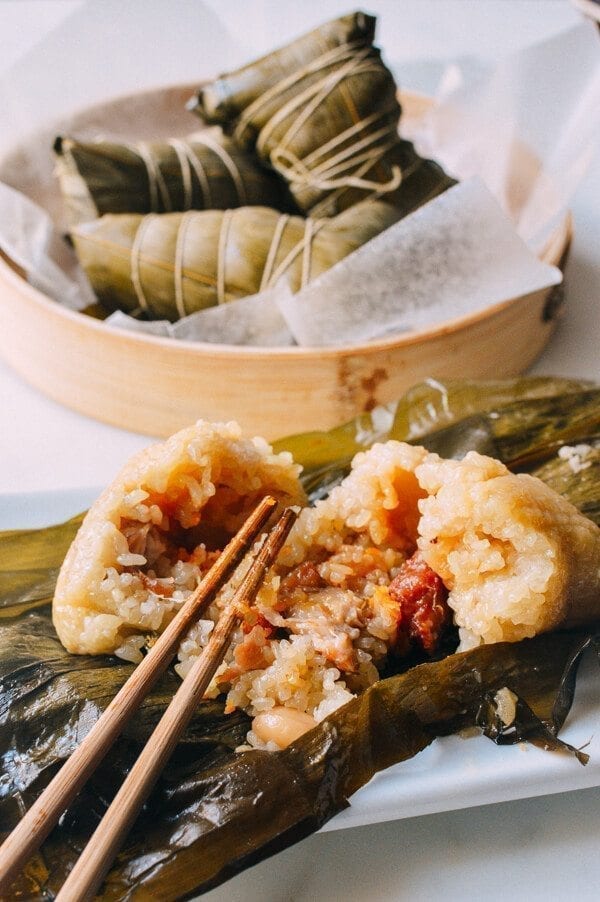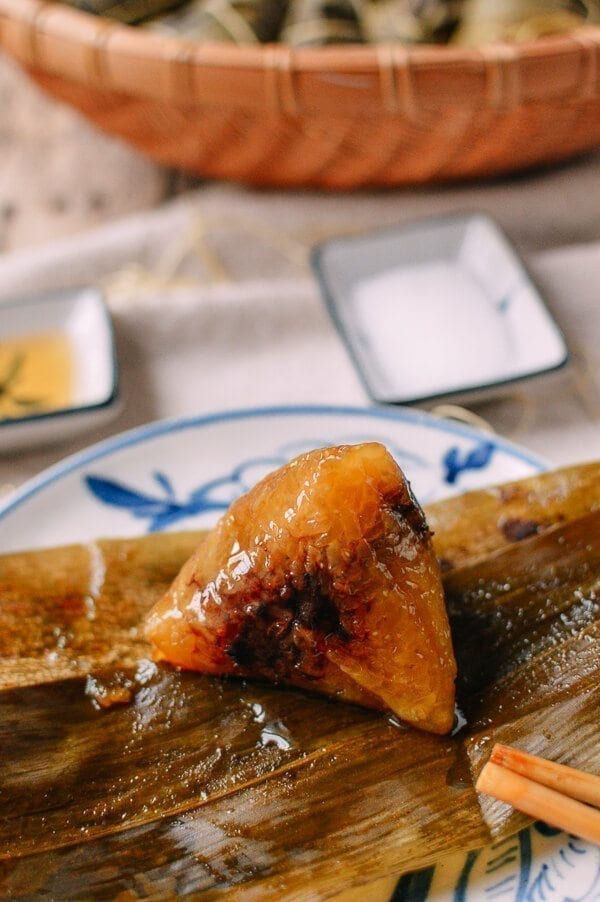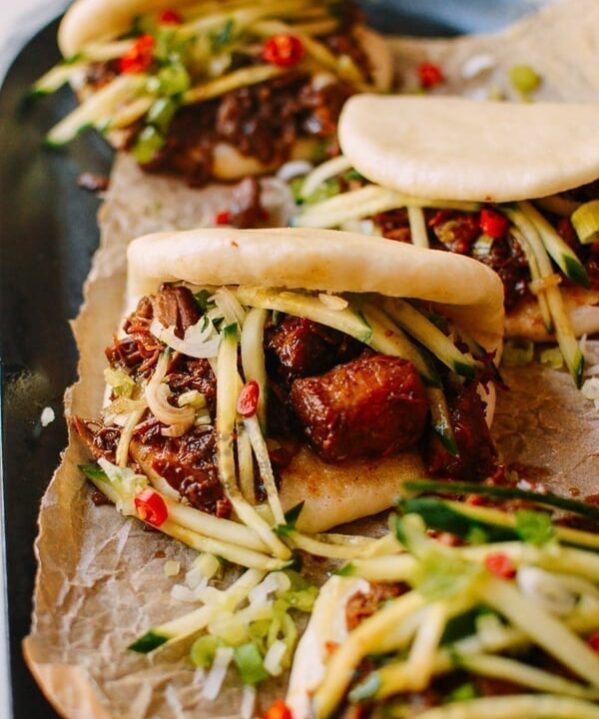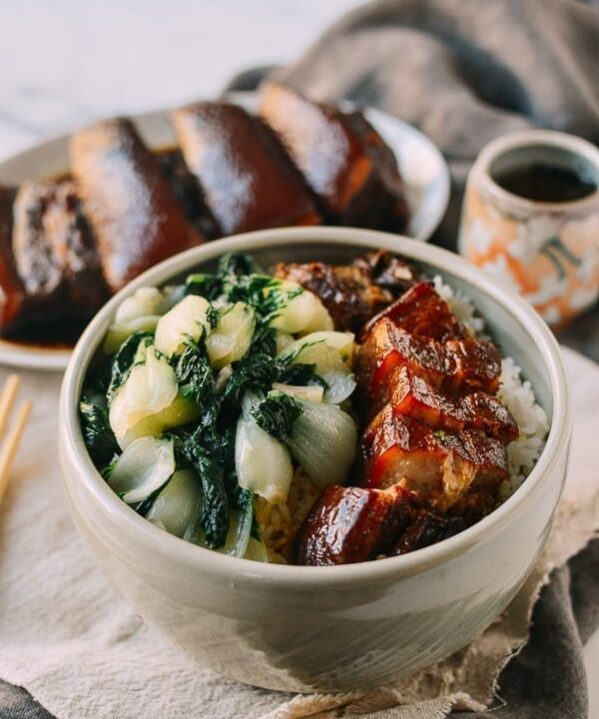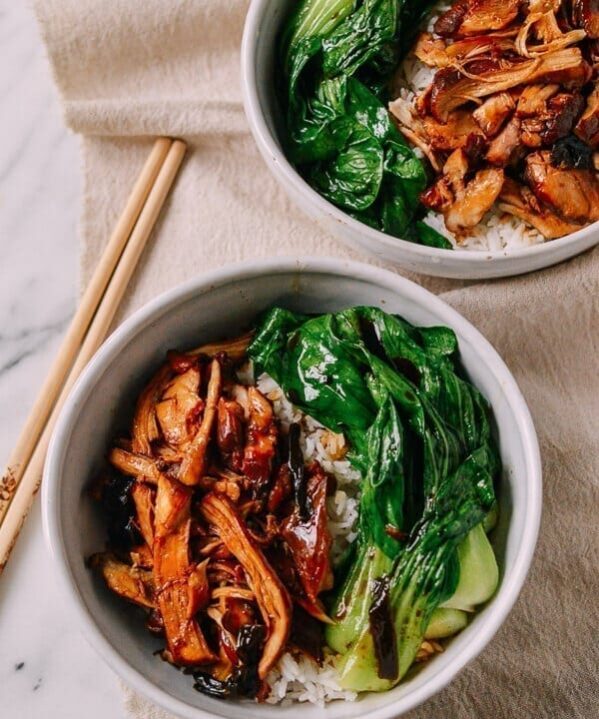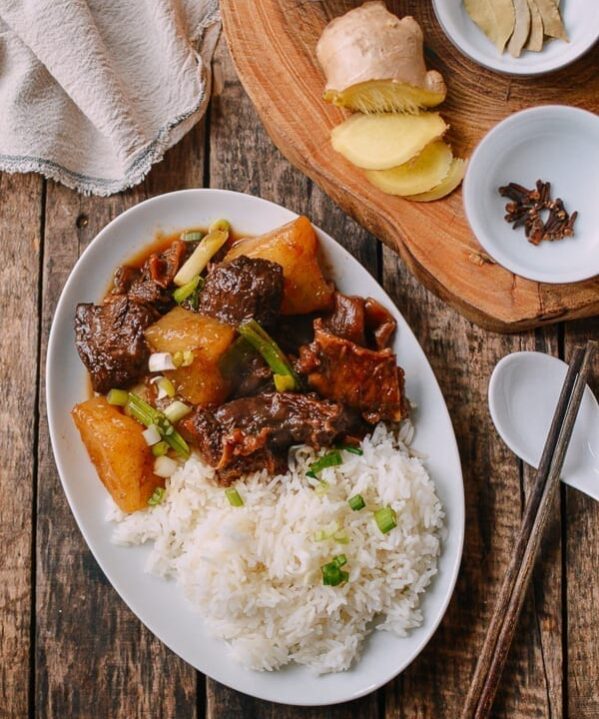Today, we are talking about how to cook zongzi in an Instant Pot. Cooking freshly made zongzi can take 7 to 8 hours on the stove.
In an Instant Pot, it will take about 90 minutes (1 hour under high pressure, plus time for the pot to pressurize and then release naturally).
What Are Zongzi?
Zongzi are Chinese sticky rice dumplings in bamboo leaves. While they’re often translated as sticky rice “dumplings,” they’re really more like tamales––just with bamboo leaves instead of corn husks, and sticky rice instead of corn masa.
They are normally served around the Dragon Boat Festival, which occurs near the summer solstice.
We have covered several zongzi recipes here on The Woks of Life, including our Shanghai Pork Zongzi, Cantonese-Style Zongzi (with pork, Chinese sausage, peanuts, and salted egg yolk), sweet red bean jianshui (alkaline) zongzi, and Zongzi with Pork Belly and Meigan Cai.
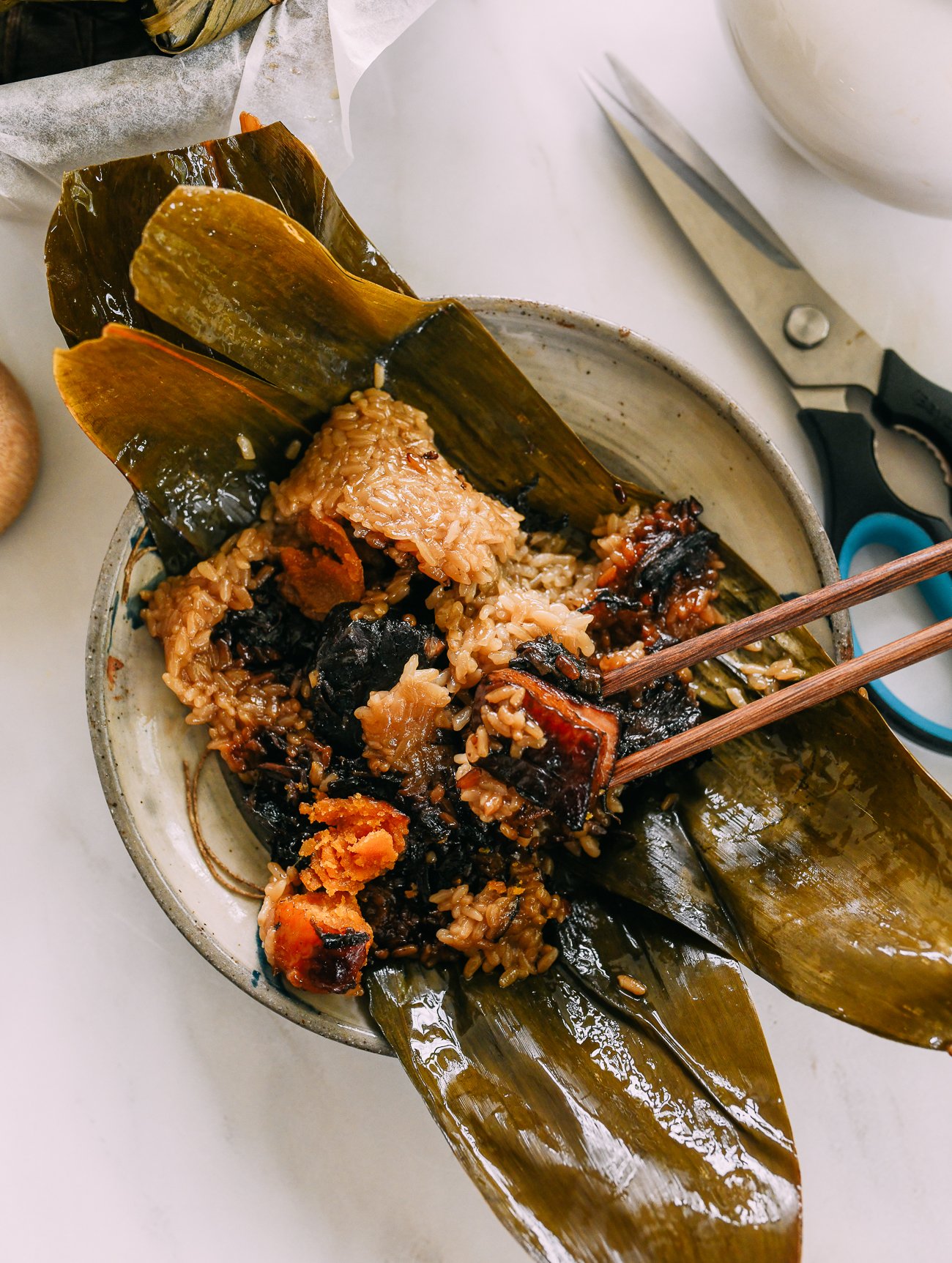
Those recipes contain everything you need to know about preparing the filling and wrapping the zongzi. In those posts, we use a simple cooking method of simmering the zongzi for 7-8 hours in a pot.
Instant Pot Zongzi to the Rescue!
If you are looking to save some time and have an Instant Pot in your kitchen, cooking zongzi under pressure is much faster, taking a fraction of the normal cooking time.
- The Instant Pot reduces the traditional cooking time from 7-8 hours to 90 minutes, saving time and energy.
- The pressure cooker will penetrate the zongzi all the way through, yielding a gooey, melt-in-your-mouth texture. (While we just posted our “Lazy Zongzi” recipe, in which the rice is steamed together in a container, the texture will be more like lo mai gai (a dim sum sticky rice dish). You could steam it for hours, but the rice texture will never turn gooey.)
- The Instant Pot will cook without as much heat and steam, leaving your kitchen environment cooler—especially nice in summer.
If you have an Instant Pot on hand and enough room in it to cook a big batch of zongzi, you can definitely cook them this way.
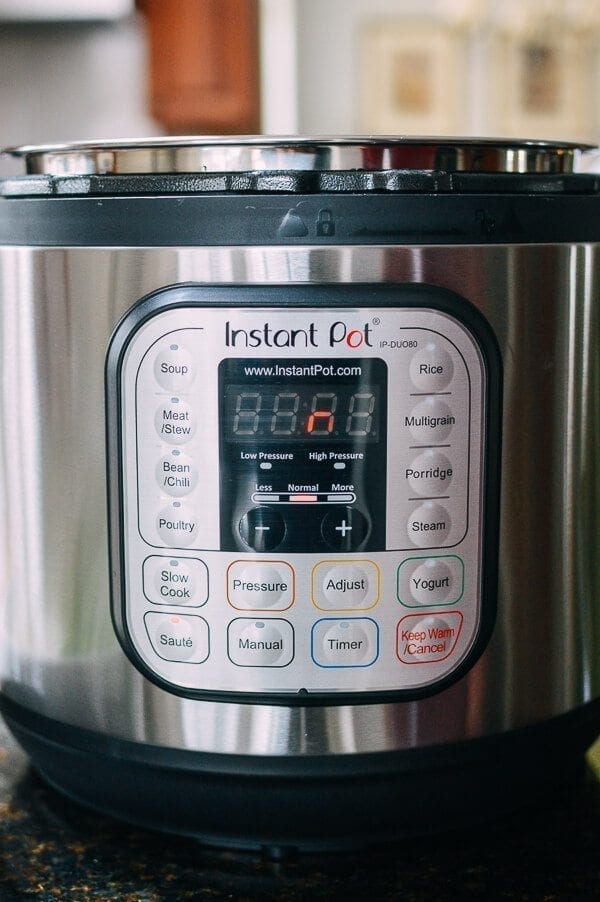
Important Notes When Cooking Zongzi in an Instant Pot
Note 1: Good zongzi are not overstuffed.
This is especially important when cooking them in an Instant Pot. The filling shouldn’t be loose, but you also want to avoid packing in too much rice. Here’s why:
- Sticky rice expands as it cooks, so if the rice is compacted too tightly when raw, the rice will strain against the leaves.
- The rice will take longer to cook through.
- The texture may turn out dense and chewy, rather than gooey.
- Flavor from the other filling ingredients (such as pork belly, sausage, or other umami elements) won’t seep into the rice as easily.
- Most importantly, the bamboo leaves may burst, causing you to lose rice and flavor. Overstuffed zongzi are especially prone to bursting in the high pressure environment of the Instant Pot.
See each of our zongzi recipes for more details and step-by-step photos on how to properly wrap them.
Note 2: Cook each type separately!
If you’re making multiple zongzi flavors or varieties, you shouldn’t cook more than one variety at a time. If you cook multiple flavors together, they will end up tasting the same.
This is especially important when it comes to making savory and sweet zongzi. Be sure to cook them separately!
How to Cook Zongzi in an Instant Pot: Instructions
Make sure your zongzi are not overstuffed, and that they are wrapped securely. Neatly nest the zongzi in the Instant Pot, in a way that minimizes gaps between them (treat it like a puzzle!).
Handle with care so as not to damage the bamboo leaves. Fill the pot until it’s no more than 2 inches below the max fill line.
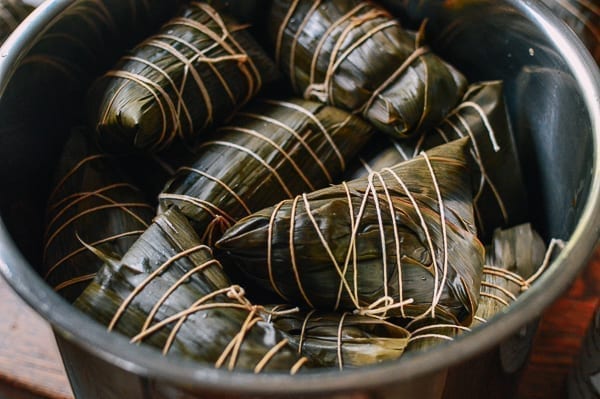
Put the metal steamer rack that came with your pot on top of the zongzi, to keep them in place during cooking. Fill with water just until you reach the max fill line. (If you have fewer zongzi, simply cover the zongzi with at least 2 inches of water.)
Cover the Instant Pot and lock the lid in place. Set on manual high pressure for 1 hour, and allow the pressure to release naturally. Be sure all pressure is released before safely opening the lid.
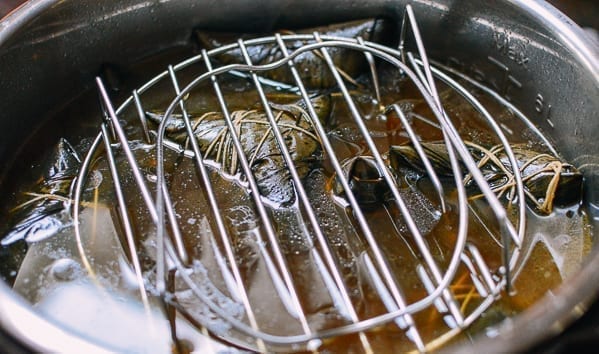
Note that the cooking time will vary slightly depending on the size of your zongzi. You can adjust the cooking time up or down by about 10 minutes, but no more.
Longer cooking times may cause the zongzi to burst, especially if they are wrapped or tied poorly. Depending on the number of zongzi you have and the size of your Instant Pot, you may have to cook them in several batches.
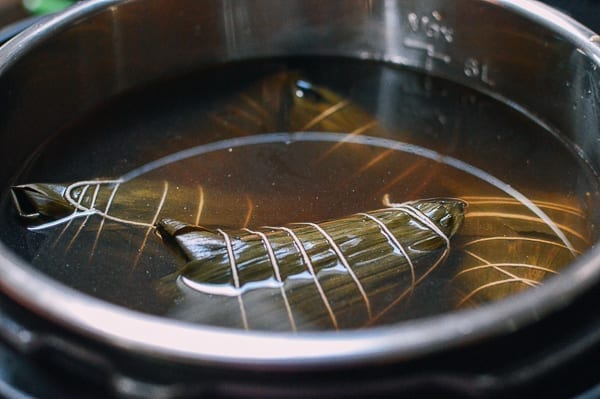
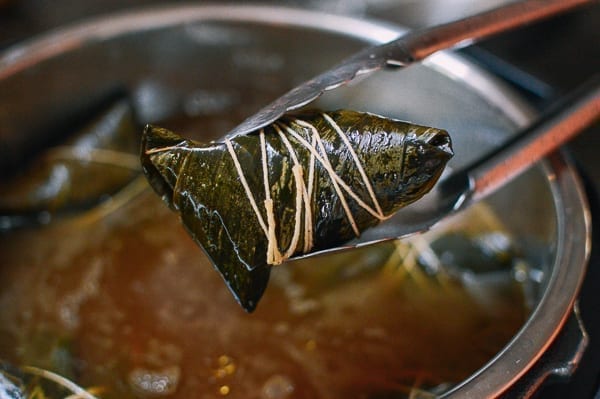
That’s it! Now you know how to cook zongzi in an Instant Pot this Dragon Boat Festival. Wishing everyone a happy and healthy holiday!
How to Cook Zongzi in an Instant Pot
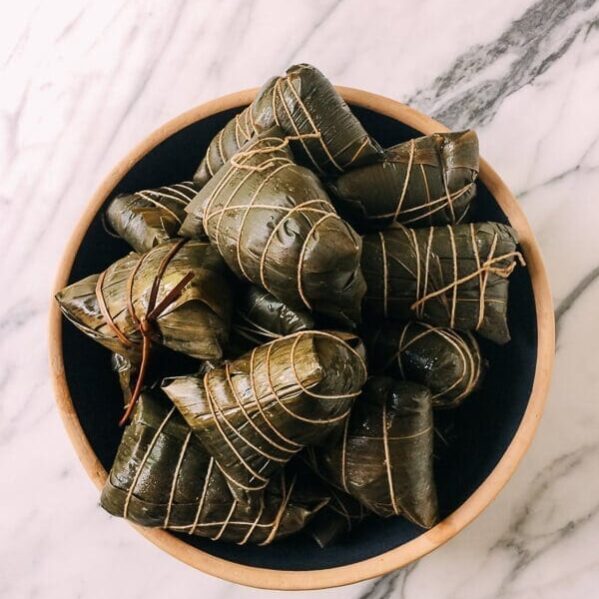
Ingredients
- wrapped zongzi
- water
Instructions
- Make sure your zongzi are not overstuffed, and that they’re wrapped securely. Neatly nest the zongzi in the Instant Pot, in a way that minimizes gaps. Handle with care so as not to damage the bamboo leaves. Fill the pot until it’s no more than 2 inches below the max fill line.
- Put the metal steamer rack that came with your pot on top of the zongzi, to keep them in place during cooking. Fill with water just until you reach the max fill line. (If you have fewer zongzi, simply cover them with at least 2 inches of water.)
- Cover the Instant Pot and lock the lid in place. Set on manual high pressure for 1 hour, and allow the pressure to release naturally. Be sure all pressure is released before safely opening the lid.
